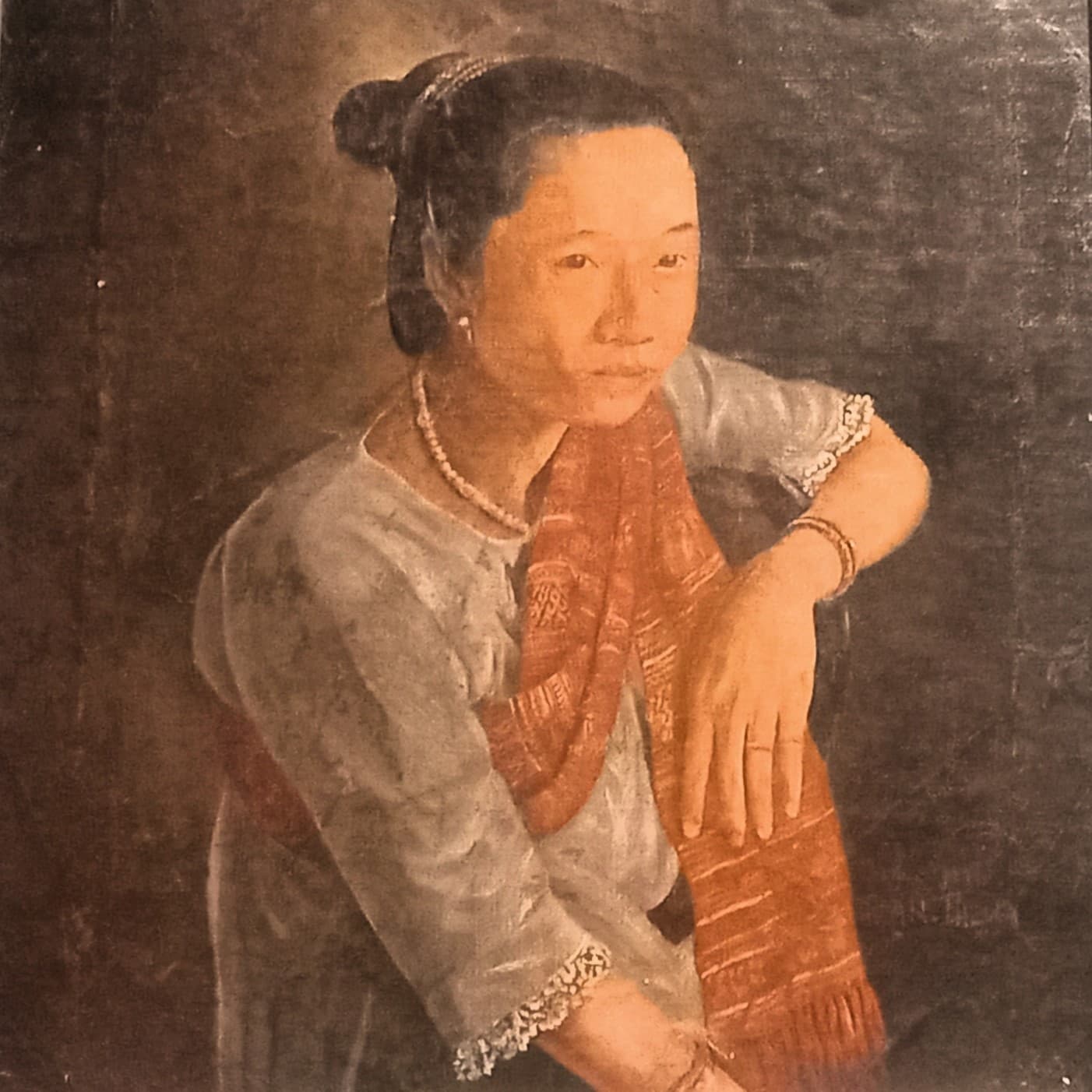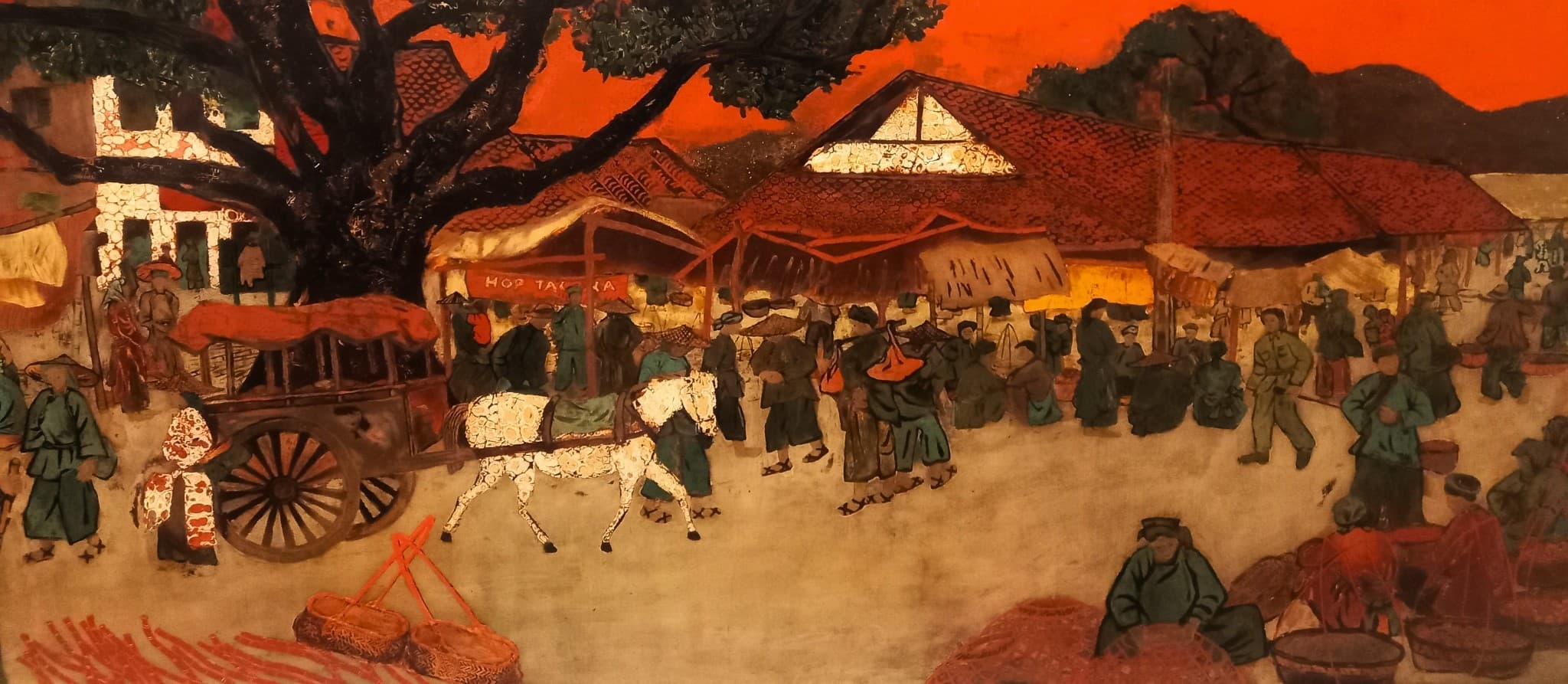First published August 2024 | Words and photos by Vietnam Coracle | 5 comments

Tom Divers is the founder and creator of Vietnam Coracle. He’s lived, travelled and worked in Vietnam since 2005. Born in London, he travelled from an early age, visiting over 40 countries (he first visited Vietnam in 1999). Now, whenever he has the opportunity to make a trip, he rarely looks beyond Vietnam’s borders and his trusty motorbike, Stavros. Read more about Tom on the About Page, Vietnam Times and ASE Podcast.
Museum-hopping in Hanoi is a great way to learn about Vietnam’s history, art and culture while also experiencing the city’s unique architecture and sidewalk lifestyle by walking between each one. As the capital, Hanoi has a broader variety of museums than any other Vietnamese city. There are dozens of museums in Hanoi and many of them are impressively maintained, engagingly presented and well-curated. What’s more, several of the best museums in Hanoi are housed in majestic, historic buildings or in modern, purpose-built structures that constitute worthy sights in themselves. Most museums also have an elegant, cosy, on-site café at which to order an espresso, croissant, cocktail or bowl of noodles to reinvigorate yourself before moving on to the next one. A couple of days spent exploring Hanoi via its network of museums is fulfilling, fun, informative and inexpensive.

[Back Top]
7 MUSEUMS IN HANOI
From War to Women, Prisons to Pre-history, Fabrics to Fine Arts
Hanoi has dozens of museums: in this guide, I only cover a selection of them. I’ve plotted each museum on my map, written a brief description, including photos, addresses, opening hours and entrance fees. As most of the museums in this list are clustered around the central districts of Hoàn Kiếm and Ba Đình, it is perfectly feasible to travel between each one on foot, thus exploring the city’s streets along the way – this is what I did and it was highly satisfying. Alternatively, just take a taxi or motorbike via a ride-hailing app, such as Grab. In general, tickets are very cheap (around 40,000vnd; $2) and audio guides are available at most of the museums. Note each museum’s opening times, because some of them are closed on Mondays. Hanoi’s museums are best visited at the beginning of your Vietnam trip, because their exhibits will likely inform and enrich the rest of your travels around the nation.
CONTENTS:
MAP:
7 Museums in Hanoi
Ethnology Museum:
Address: Nguyễn Văn Huyên [MAP] | Open: 08:30-17:30 (closed Monday) | Ticket: 40,000vnđ
This unique museum focuses on the lives, customs, religions, traditions, history and architecture of Vietnam’s 54 different ethnic groups. The displays are divided into three parts: The Peoples of Vietnam (the main circular building), The Peoples of Southeast Asia (the modern kite-shaped building raised on pillars), and the Architectural Garden (behind the main building). Celebrating the cultural diversity of Vietnam’s 100 million-strong population, the main building engages visitors (of all ages) through colourful and intriguing displays of clothing, daily utensils, ceremonial objects, photography and models. Each room is dedicated to one or more ethnic groups and there are lots of good information signs in English.
What appeals to me the most about the Ethnology Museum is that it focuses primarily on everyday activities and lifestyles that continue throughout Vietnam today. This means that, unlike many other museums, this collection is a reflection of present-day Vietnam. As a foreign visitor, the exhibits and information here will inform your experience of the nation as you travel through Vietnam: so many of things you see and learn about in these rooms, you will see and experience again on your trip through the provinces. To take a very basic and fundamental example: one of the first exhibition rooms introduces the concept of ancestor worship and the family altars that you see in the majority of Vietnamese homes and businesses. Another example is the different clothing that distinguishes many of the ethnolinguistic groups, especially in the northern highlands. And, best of all, the Architectural Garden features over a dozen genuine, full-scale examples of family homes and communal spaces from different ethnic groups that visitors can enter and that you will almost certainly see again as you travel through the nation. This is a museum that you could easily spend several hours at, including a break for coffee and cake at the attractive on-site café.





History Museum:
Address: 1 Tràng Tiền & 216 Trần Quang Khải [MAP] | Open: 08:00-12.00 & 13.30-17.00 | Ticket: 40,000vnđ
Formerly the French colonial École Française d’Extrême-Orient, founded in the early 20th century, the History Museum is housed in a magnificent, palatial building whose ochre exterior and red-tile roofs stand out in the sun beneath the boughs of tropical trees. With over 200,000 artifacts on display, this is one of Hanoi’s biggest museums. Indeed, it’s so big that the collection has recently expanded to a second building across the street (labelled ‘building B’ on my map): one ticket covers entry to both. The main museum building (‘building A’ on my map) covers Vietnam’s history from prehistoric times to the earliest-known human inhabitants to Bronze Age cultures through to the Indianized kingdoms of Phù Nam and Champa and the succession of Vietnamese imperial dynasties. Across the street, building B focuses on the 20th century and Vietnamese revolutionary period. There’s a lot to see, so give yourself at least a couple of hours to explore, perhaps with a ‘halftime’ break at the coffee shop by the entrance.
There are some exquisite artifacts on display that catch your eye as you wander from room to room: from delicate gold leaf imperial crowns to ceremonial painted ceramics, from wooden screens inlaid with mother-of-pearl to stone sculptures from Champa. The most famous artifact of all is the large Đông Sơn drum. Discovered in Thanh Hóa Province, this ceremonial bronze drum dating from the 2nd-1st century BCE is intricately carved with figures and animals, and has become a national symbol: you’ll see its design echoed throughout Vietnam, from shopfronts to domestic beer brands.





Fine Arts Museum:
Address: 66 Nguyễn Thái Học [MAP] | Open: 08:30-17:30 (closed Monday) | Ticket: 40,000vnđ
Housed in a large colonial-period building from 1937 that was formerly a Catholic girls boarding house, the National Museum of Fine Arts is a chronological walk through the last thousand years of Vietnamese art. Beginning with the Ly Dynasty in the 11th century and ending at the present day, exhibits are displayed in large rooms over three floors connected by a wooden staircase. Audio guides are available and there are information signs in English at the entrance to each room providing context for the period. The dynastic centuries are dominated by imperial decoration, religious art and architectural motifs, such as finely carved wooden doors, religious murals and sculptures of Buddhist figures. From the 20th century there are some good examples of lacquer engravings and delicate silk paintings, some of which depict familiar historical figures, such as the writer Nguyễn Du, and places that travellers may recognize from their itineraries, like Vịnh Mốc. The deeper into the 20th century you go, the more political the art becomes, with many paintings depicting heroic revolutionary struggles, battles and the like. The last room is dedicated to contemporary art, with some pieces hinting at current issues such as industrialization and environmental degradation. Near the museum entrance there’s a very nice little coffee shop: Lê Art Cafe & Wine Bistro.





Women’s Museum:
Address: 36 Lý Thường Kiệt [MAP] | Open: 08:00-17:00 daily | Ticket: 40,000vnđ
A white, four-storey building in the city centre, the Women’s Museum celebrates the role of women in Vietnam from past to present. Exhibits are arranged into three zones: Women in the Family (1st floor), Women in History (2nd floor), and Women’s Clothing & Fashion (3rd floor). The collection is presented around a circular atrium which is hung with colourful lanterns. The museum feels intimate and informal – perhaps a result of the focus being primarily on ‘everyday’, ‘normal’ people and their cultural practices and activities, such as marriage, childbirth, work and clothing, rather than on royalty and major events. Although the collection of elegant dresses on the 3rd floor is the most visually appealing part of the museum, I most enjoyed the striking propaganda posters featuring women on the 2nd floor, a couple of which are in the photos below. This is another of Hanoi’s museums that travellers should consider visiting at the start of their Vietnam trip, because many of the things you see and learn about here will inform the rest of your travels around the nation.





Military History Museum:
Address: KM6+500 CT03 Tây Mỗ Nam Từ Liêm [MAP] | Open: 08:00-16:30 (closed Monday & Friday) | Ticket: 40,000vnđ
One of Hanoi’s biggest and most popular museums, please refer to the New Vietnam Military History Museum guide for full details. (The images below are from the old museum location.)





Hỏa Lò Prison Museum:
Address: 01 Hỏa Lò [MAP] | Open: 08:00-17:00 daily | Ticket: 50,000vnđ
The curious name (hỏa lò means ‘fire oven’) of this late 19th century French colonial prison derives from the area’s precolonial use as a pottery making area where dozens of kilns burned day and night. For half a century, the French used the prison to incarcerate Vietnamese political activists, until they were defeated in 1954, after which the North Vietnamese used Hỏa Lò to detain U.S POWS, who coined the name ‘Hanoi Hilton’. Among those ‘Hilton’ inmates was John McCain, who later became the 2008 U.S Republican presidential candidate. Like other colonial-era penitentiaries elsewhere in Vietnam, the building itself is deceptively attractive from the outside, belying its function as a place of brutality. Inside the building’s ochre walls, there are grim recreations of conditions for prisoners held here during colonial times: pale, skeletal mannequins are chained together in tiny stone cells or suffering acts of torture from prison guards. Beyond the cells there are exhibitions about former inmates – both Vietnamese and American – and several rooms outlining the broader historical context of the prison.
For foreign visitors, Hỏa Lò is among the most popular attractions in the capital. Although the museum is successful in conveying the harsh conditions and brutality towards inmates, I didn’t find it particularly informative, and I can’t help thinking that part of its popularity belongs to a kind of fetishization of the ‘Vietnam War’ and a sort of trend in ‘gruesome’ tourism that exists in Vietnam and Cambodia. For example, some of the prison cells are ‘dramatically’ lit with a fiery red light and a brooding, villainous soundtrack played in the background. This creates a spooky, theatrical ambience which, at times, makes the museum feel more like a ghost train ride or Madame Tussauds – offering frivolous, fun thrills, rather than an education in history. Indeed, many of the visitors at the prison were dressed up and posing for Instagram photos by pretending to be entombed in the cells and mimicking the horror on the faces of the prisoner mannequins.





Biological Museum:
Address: 19 Lê Thánh Tông [MAP] | Open: 08:00-17:00 (closed weekends) | Ticket: free (building)
Housed in the grand, sturdy and handsome National University building (constructed in 1904 and formerly the Université Indochinoise), the Museum of Biology would be better described as the natural history or zoology museum. However, the real reason to visit is not necessarily the museum itself, which is usually closed to the public and only really opens for school groups, but the building it’s in. Enter the university via the Faculty of Natural Sciences gate (Trường Đại Học Khoa Học Tự Nhiên) which is a narrow alleyway just south of the grand main entrance (usually locked) on Lê Thánh Tông Street. Bear left behind the back of the building and go up the stairs to enter the university. Now you will be standing inside the main entrance in a cathedral-like space with mosaic floors, soaring arches, and a chandelier hanging from a Romanesque cupola with Doric columns. It feels very European indeed. The biology museum is up the stone stairs to the left as you enter the building – you can’t miss it because there’s a full skeleton (of an elephant, perhaps) bearing down on you from the landing. Climb the stairs to a small wooden door. It’s unlikely to be open, but there are a few other skeletons and skulls on display here, and inside (if you can get in) there is a range of stuffed and preserved animals. Your best chance of entering the museum is to ask anyone who’s around. But, if you like architecture, it really is worth visiting just for the building.





*Disclosure: I never receive payment for anything I write: my content is always free and independent. I’ve written this guide because I want to: I like these museums and I want my readers to know about them. For more details, see my Disclosure & Disclaimer statements and my About Page



Excellent read! We are in HCM in October and are looking to do a few meuseums there
Regards
Shane
Thanks, Shane. I hope you enjoy HCMC.
Best,
Tom
I visited two of these museums. However, it was after a 10 day motorcycle trip through northeastern Vietnam. (I rented from Danny) I got a scooter ride from the Grab app to get downtown and then walked from there. Some of the sculptures in the Women’s Museum that pertained to the war were especially moving. And yes, the cafe at the Museum of Fine Arts is a very nice place. Another favorite place of mine is Bookworm Hanoi. You can get one of the books on your list and relax in the air conditioning with coffee and pastry. There are many nooks and crannies to be explored in Hanoi.
Hi Paul,
I’m glad you enjoyed the museums. And yes, Hanoi is certainly a ‘nooks & crannies’ kind of city! 🙂
Best,
Tom
I bought the same copy of Graham Greene’s, “The Quiet American”, that you have in your review. I think it was from Book Arts. Sadly (or eerily), the cover was photographed by Tim Hetherington. He and Sebastian Junger co-produced the film, “Restrepo” which was about an American platoon defending a post in the Korengal Valley in Afghanistan. Hetherington was killed covering the Libyan War in April of 2011.